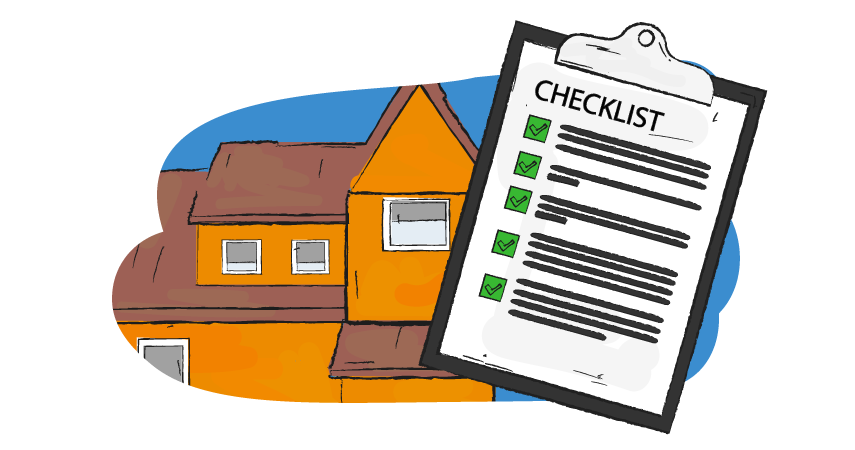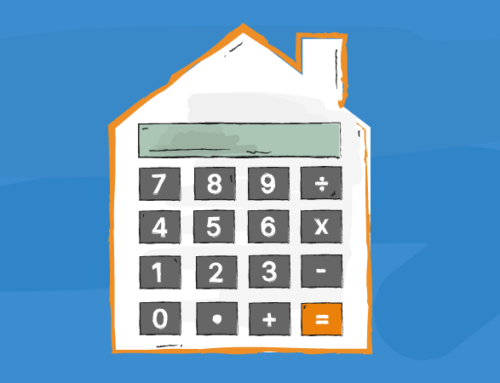A landlord’s guide to inventories and avoiding disputes

One of the most important pieces of documentation you will have as a landlord is your inventory. This itemises all the fixtures, fittings, and other elements of your property and provides an accurate record of what condition they were in at the start of the tenancy, with photo evidence.
To ensure that you protect your property and prevent deposit issues with your tenants, we have a handy guide to inventories and avoiding disputes.
When do landlords need an inventory?
It’s important to prepare your inventory before any tenants move into your property. At check-in, your tenants should use the inventory to go around the property and note any changes to the report.
Throughout the tenancy, you should make periodic inspections to identify any damage that does not correspond to the inventory report. Finally, at check-out, compare the condition of the property to the initial inventory to identify any deductions that need to be made from the tenant’s deposit.
Inventories can provide evidence in the event of a dispute
If you do not have an inventory, you will be missing out on evidence for your deposit protection scheme in the event of a dispute. Inventories can be critical for the adjudication process and can make the resolution much quicker and easier.
A quick check-out process at the end of the tenancy can help to reduce the void period between tenants, helping to ensure you don’t miss out on rental income. Depending on your landlord insurance provider and the type of cover you have purchased, not having an inventory could breach your terms.
How to compile an inventory for a rented property
A good inventory should be unbiased and compiled to a professional standard. The report should list and describe the quality of the property’s contents, décor, fixtures, and fittings for both the interior and exterior.
The size of your inventory will be determined by whether you let a furnished or unfurnished property. However, don’t be fooled into thinking that just because you let an unfurnished property you won’t have to spend long creating your inventory. Remember, an inventory doesn’t just list the items within the property, but also the condition of the building and its contents.
As the majority of deposit disputes involve cleaning, it’s important to embed photographs within the report to show the initial condition of the property. Additionally, don’t forget to include meter serial numbers and disclaimers. There must also be a declaration page at the end of the inventory for signatures.
What does the check-in process of a rented home involve?
According to estate agent haart, accidental damage of a rental property most commonly occurs at either check-in or check-out. This is why it’s important that the tenants check, agree, and sign the inventory before they move in. They should use the report to check each room in the property, and make appropriate amendments if necessary. Both parties must agree these changes and to the evidence shown in any photographs.
If possible, it can be a good idea to meet with the tenant to go through the tenancy agreement and inventory before handing over the keys. Visit the property with the tenant to go through the inventory so that any problems can be addressed and transparency is ensured. The document must then be agreed and signed by both parties.
Only when the inventory is fully agreed and signed should the landlord or letting agent release the keys to the tenant. Remember, many deposit claims are rejected because the tenant has not signed the inventory.
It’s also important that you place the tenant’s deposit in a deposit protection scheme within 30 days of receiving it. Failing to do so could hinder your ability to make a claim if required.
Why are periodic inspections important?
Landlords should conduct periodic inspections of their property to ensure not only that it is being looked after, but also that the tenant is not breaching the tenancy agreement. Inspections will also highlight any maintenance issues that need solving.
It may be a good idea to document and communicate any issues raised during a periodic inspection with the tenant, which can later be used as evidence. Landlords are advised to carry out property visits every three to six months, but remember that you need to give at least 24 hours’ notice to the tenant and have their permission to enter the property.
What does the check-out process of a rented home involve?
When checking a tenant out of a rented home, you will want to inspect the property one final time after they’ve handed back the keys. You might want to provide tenants with a reminder of how the property should be left to help ensure they get as much of their tenancy deposit back as possible. This could be done four weeks before the agreed check-out date.
Always compare the state of the property at check-out to the initial inventory report. Look at the following when checking out a tenant:
- Is the property clean?
- Is anything damaged beyond fair wear and tear?
- Are any items provided with the property missing?
- Is the garden in an acceptable state? (This may depend on whether the tenancy agreement requires the tenant to maintain outside areas)
- Has the tenant left behind any items that will require a removal service?
- Has the tenant handed back all keys to the property, including window keys?
- Have you noted the meter readings to ensure tenants pay what they’re responsible for?
Once you have inspected the property, you should compile a clear report that lists any changes to the property, and include photographs.
What happens after the check-out inspection of a rented home?
If you plan to make any deductions from the tenant’s deposit, you should notify the tenant within ten working days of any proposed deductions, and explain in writing why these deductions are being made.
If a dispute arises, you or your letting agent should take reasonable steps to resolve the matter before referring it to the deposit protection scheme. If no agreement can be reached, the scheme must be involved.
What deductions can be made from a tenancy deposit?
As a landlord, you need to expect that your property will experience some wear and tear over the course of a tenancy. You cannot make a claim due to fair wear and tear caused by the normal use of a piece of furniture, for example. However, if the damage could have been avoided by the tenant, then you may be able to make a claim.
Here are the key areas that may require deductions from a tenant’s deposit:
- Cleaning
- Damage
- Redecoration
- Missing items
- Gardening
- Rent arrears
- Unpaid utilities
What does the adjudication process involve?
The adjudicators used by your chosen deposit protection scheme will base their decision purely upon evidence provided by all parties. This means that your tenancy agreement, inventory, check-in and check-out reports, and any periodic inspection reports may be vital.
You should also supply receipts or estimates for any work that has been or must be completed as a result of damage to the property.
Remember, this is the tenant’s money that they are dealing with, so the tenant will receive their deposit back in full unless you provide satisfactory evidence. The scheme aims to resolve the dispute within 30 days of receipt of the evidence.
The decision by the adjudicator is final and binding on all parties.
Recommendations from deposit schemes
The three Government-approved deposit protection schemes advise that inventories should be compiled to a professional standard. In addition, all schemes prefer landlords or letting agents to use independent inventory firms.
They suggest that you always include photographs in your reports and accompany your tenant at check-in and check-out. You should have a high quality, unbiased inventory report to gain agreement quickly and avoid dispute.
They also recommend conducting regular, documented property visits and ensuring that your tenants know their rights.
A thorough and unbiased inventory that is kept up to date could be the key to avoiding disputes with your tenants and ensuring that the end of tenancy process goes smoothly for both parties.
Find suitable protection for your property
There are various risks associated with letting a residential home. Keep your investment safe, whether it’s a single property or a portfolio. Our comprehensive Landlord Insurance can help protect you from financial risks, including accidental and malicious damage by tenants and loss of rent if the property becomes uninhabitable due to an insured event.
The sole purpose of this article is to provide guidance on the issues covered. This article is not intended to give legal advice, and, accordingly, it should not be relied upon. It should not be regarded as a comprehensive statement of the law and/or market practice in this area. We make no claims as to the completeness or accuracy of the information contained herein or in the links which were live at the date of publication. You should not act upon (or should refrain from acting upon) information in this publication without first seeking specific legal and/or specialist advice. Arthur J. Gallagher Insurance Brokers Limited trading as Just Landlords accepts no liability for any inaccuracy, omission or mistake in this publication, nor will we be responsible for any loss which may be suffered as a result of any person relying on the information contained herein.
FP1399-2023




